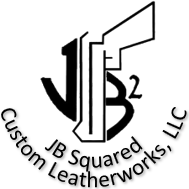
Kansan
Members-
Posts
36 -
Joined
-
Last visited
Profile Information
-
Gender
Male
-
Location
Fort Hood, Texas
-
Interests
Guns, leather, outdoors, horses, axes, history
LW Info
-
Interested in learning about
Holsters, sheaths, saddles, and tack
Recent Profile Visitors
Kansan's Achievements

Member (2/4)
-
Thanks for the advice. I'd like to use top quality leather but can't afford buying multiple sides of different weight HO leather, so if I can just order one weight that will save me money. I'll remember not to stitch across the belt... Since I'll be stitching by hand, any way to reduce the amount of stitching is welcome :-)
-
Dwight, you mentioned that you use two strips of leather that are the same weight. What weight do you consider to be ideal for this purpose, assuming the end result is some kind of heavy duty belt? 5/6 oz strips... 6/7 oz? I'd like to try it your way for my first lined belt. Byggyns, I like how your belt came out, the stitching looks good to me. I see what you mean about the curve line of the stitches but would not have noticed it by looking at it. Good job!
-
This is a great topic, I've already picked up some ideas for scraps. Thanks for bring it up, I'm hoping to see a lot more. Something I've done with some scraps is making these little valets or trays. You can put them on your dresser and use them for keys or change or whatever. You can make them pretty much any size, but thicker leather will require a little bit more so you can bend up the corners. Probably a 6" square piece would be the minimum I would do something with, but triangle pieces would work too. I've held the corners together using thread or rivets on some, but for what it's used for just wet molding it and a couple coats of resolene will keep the corners up indefinitely just fine.
-
First Knife Sheath
Kansan replied to Bruno Rock's topic in Gun Holsters, Rifle Slings and Knife Sheathes
Looks nice, I like it. Was the olive oil the only thing you used to darken it? I've tried olive oil before but it didn't darken in that much. Did you soak it in the stuff? I'd like to use more natural dyes like that but haven't been able to achieve that type of darker hue. -
I recently saw a sheath my grandfather had made for his axe that included a leather "button" (i.e. circle of leather a little bigger than a quarter) riveted on one side. On the other side, he had attached a leather lace, or string, or thong or whatever it's called. To keep it on, he just wrapped the string around the handle and then several times around the leather button. Not sure if I've described that very well, but it seemed to work great. For a more traditional strap and snap configuration, here is my one and only gallery on LW that I put together last year of a couple axe sheaths I made to give you some ideas: http://leatherworker.net/forum/index.php?app=gallery&user=54465
-
My First Wet Molding Holster (Xd)
Kansan replied to Kansan's topic in Gun Holsters, Rifle Slings and Knife Sheathes
Good feedback, Malabar. I may make the next one lower, especially since it's for a larger gun. I tried again with a clip on IWB and might have over-engineered it. I went with 8-9 oz leather, with 6-7oz mouth reinforcement piece. Also, lined it with ~2oz pigskin. It's certainly solid and the mouth stays open even IWB, making it easy to re holster. It works great, with the only two downsides being that I couldn't mold it as deeply with such a thick piece, and it may be too thick for some body types or clothing styles. -
My First Wet Molding Holster (Xd)
Kansan replied to Kansan's topic in Gun Holsters, Rifle Slings and Knife Sheathes
Thank you guys for the image & gif. Those make the pattern drawing easier. I'll have to try a few more before I find a groove of what I like and what works for me. Dwight - you're right, that is quite the process, but I can see how it would ensure the final holster is exactly right. I guess if you have the time, why not? I enjoy leather projects and am kind of sad when each one is done, so prolonging it a bit to make it "just right" is never a bad thing. -
My First Wet Molding Holster (Xd)
Kansan replied to Kansan's topic in Gun Holsters, Rifle Slings and Knife Sheathes
Thanks guys, for the different perspectives. On my next holster, I'd like to put a lining in there, so it will already be a little thicker. However, I may try the leather reinforcement piece to see how I like it. Regardless of whether it is absolutely needed or not, I do think that it makes the holster look a little nicer. I'm sure there are a lot of different ways to wet mold a holster, but I sewed the leather together flat first and then wet them, and molded them. I assume there is a way out there to mold and then sew (?). So anyway... for the mouth reinforcement piece, the correct steps would be to sew it on first, then sew the two sides of the holster, then wet, then mold, correct? Sorry this is probably a stupid question but I'm obviously in the learning phase. Dwight, that holster looks incredible. How much time does it take you to make something like that? Time is the one reason I don't think I could make a business very lucrative - it takes me so long to do a project that I would be making a very low income per hour (like maybe $1 per hour). lws380 - thanks for the suggestion. I wasn't sure what the best profile would be for the top of the holster. I mostly concentrated on making sure the trigger was mostly covered. I'll experiment with a long hump on the slide next time and see how it goes. -
Some Will Ghormley Patterned 1911 Holsters
Kansan replied to Kansan's topic in Gun Holsters, Rifle Slings and Knife Sheathes
Thanks Red Bear for the suggestion - I did actually look at his tutorial before I did the plug and like you said, it did look fairly easy. The biggest pain was the fact that the plug would not stay where it was supposed to. Anytime I pushed an awl through it or tried to thread the needle through the hole, the whole plug would go catywompus on me. He says he didn't glue it in first, and I didn't either. I'm not sure that would have helped, but it might have helped me at the stage I'm at. It came out looking ok anyway, and I dyed the bottom black so that the not-so-even stitches are not really noticeable. I guess that's what separates the experts from the amateurs like me I agree TexasJack, the weeping heart holsters are surprisingly practical. -
My foray into the holster world with Will Ghormley's 1911 patterns convinced me to try my hand at a wet molded holster for my Springfield XD9SC. Any critiques or suggestions? I've noticed that many holsters like this have an extra piece of leather sewn onto the front. Is that to add stiffness? Or to guard against wear and tear?
-
Some Will Ghormley Patterned 1911 Holsters
Kansan replied to Kansan's topic in Gun Holsters, Rifle Slings and Knife Sheathes
Thanks Red Bear. The bikini holsters retain the 1911 suprisingly well. I was dubious when making this one, but I was pleasantly surprised. If you make one yourself, I'll be interested in your thoughts. I've only worn it around the house, though, and would have to test it more thoroughly to really call it foolproof, though. Thanks for the kind words on the mexican loop. It was pretty easy to make other than the toe plug. There has got to be a better way that what I was doing. I didn't have a good method for keeping it in place while I was sewing it in. I had some near misses with my awl almost taking out my other hand. Fortunately, I escaped unscathed -
Some Will Ghormley Patterned 1911 Holsters
Kansan replied to Kansan's topic in Gun Holsters, Rifle Slings and Knife Sheathes
Wow, thanks for the suggestion. That would save me hundreds of dollars and there is a Harbor Freight not far from here. For the frequency that I would use it, I don't think I need a professional sized one. Here's another holster I made yesterday from Will Ghormley's pattern pack. The pack has 7 types of holsters for the 1911. -
Some Will Ghormley Patterned 1911 Holsters
Kansan replied to Kansan's topic in Gun Holsters, Rifle Slings and Knife Sheathes
Thanks guys, I thought there was probably a stamp or something out there while I was doing this. I've been looking at your suggestions... do I need a 5 ton hydraulic press or something to use these embossing plates? Is there a way of using these that doesn't require a commercial machine? I'm not familiar with embossing plates and it looks like I'll need some kind of press. Maybe I can modify my drill press? Or my reloading press? -
I recently decided to try my hand at holsters, so I picked up Will Ghormley's 100th Anniversary 1911 Holster Pattern Pack a while back and have made two of the holster styles so far. I thought I'd post them for your viewing pleasure and see if anyone cared to give me feedback. The bikini style holster is super easy to make & has been posted about before here: http://leatherworker.net/forum/index.php?showtopic=37769 I made a few of them and modified them a little bit so they weren't heart-shaped. They work great! I also made the US Army cavalry full flap holster, which also works really well. It's a fairly tight fit, but I'm going to put my 1911 in a bag and store it in the holster for a few days and I think that will loosen it up some. The "US" didn't come out as nicely as I would have liked, due entirely to my carelessness in tracing it on the leather. Maybe I'll try again someday. It was a really fun project. Any critiques or suggestions? Anyone else make Will Ghormley's patterns? The pack comes with 7 patterns, but I'm not sure if I'll do any of the others. The Army holster is really why I got the pack. I may try to make wet-molded OWB pancake holster next. I've never wet molded anything before, but there's a first time for everything.
-
Thanks, Michelle for the suggestion. It's too late now, as I just put resolene on it. I'll see how it works. You're probably right that two layers of something (Tan Kote + Resolene) would probably have slicked it more. I'm the only person who will actually use it, so if the dye bleeds it will fit in with all the other dye stains I usually have on my clothes




